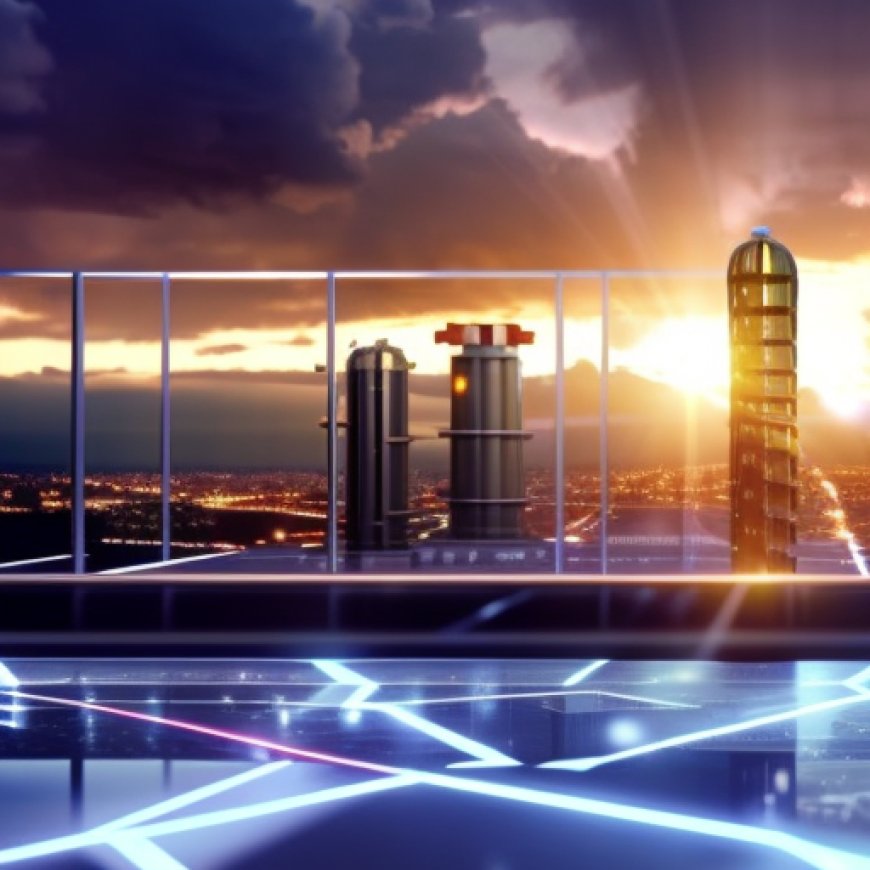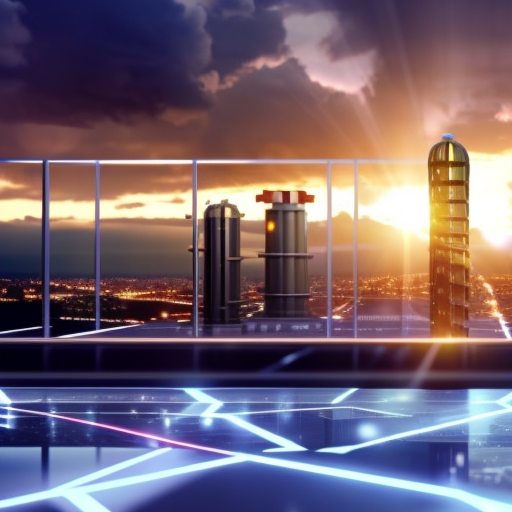World’s first 300-megawatt compressed air energy storage project to be put into commercial operation soon: political advisor-Ecns.cn
World's first 300-megawatt compressed air energy storage project to be put into commercial operation soon: political ... ecns


Compressed Air Energy Storage Project in China
Introduction
The world’s first 300-megawatt compressed air energy storage project in Yingcheng, Central China’s Hubei Province, will be put into commercial operation soon, according to Song Hailiang, a member of the National Committee of the Chinese People’s Political Consultative Conference (CPPCC) and the Secretary of the Party Committee and Chairman of China Energy Engineering Corporation Limited (CEEC).
Chinese Premier’s Announcement
Song made these remarks following Chinese Premier Li Qiang’s announcement that China will strengthen the construction of ecological civilization and promote green and low-carbon development in 2024 during his government work report.
CEEC’s Contribution to Sustainable Development Goals
As the national team and main force in energy and power and infrastructure construction in China, CEEC is dedicated to contributing more optimal energy construction solutions to building a low-carbon, smart, and harmonious beautiful world, Song noted.
Comprehensive Energy Storage Projects
In the field of comprehensive energy storage, CEEC has successfully built compressed air energy storage power stations in Hubei, Shandong Province, Gansu Province, and Liaoning Province. They have taken the lead in technology routes, solutions, and industrial ecology. The Yingcheng project in Hubei is the world’s first 300-megawatt compressed air energy storage project, which will be put into commercial operation soon. The Jiuquan project in Gansu is the world’s first 300-megawatt artificial cave compressed air energy storage project, solving the world’s geographical constraints on compressed air energy storage.
CEEC’s Global Presence
CEEC is one of the world’s largest comprehensive solution providers in the power industry and infrastructure investment and construction contractors. Their business covers more than 140 countries and regions worldwide, with over 100,000 international business personnel. They rank among the top five in contract amounts among Chinese enterprises undertaking foreign projects. Over the past five years, CEEC’s cumulative contract amount with countries associated with the Belt and Road Initiative (BRI) has exceeded 500 billion yuan, accounting for over 10 percent of the proportion of contracts signed by all Chinese enterprises.
Characteristics of CEEC’s Overseas Projects
According to Song, CEEC’s overseas projects have three major characteristics. First, they are large in scale, such as the Nestor Kirchner-Jorge Cepernic Hydroelectric Power Plant in Argentina, which is the largest overseas power project undertaken by Chinese enterprises. Second, the advantages of the entire industry chain are well utilized, with strong integrated service capabilities from survey planning and design to investment construction and operation. Third, the technological level continues to upgrade, accelerating the transformation from traditional energy to new energy, especially in the integrated construction of wind, solar, hydro, and storage energy.
Opportunities for Global Energy Development
“Faced with the new pattern and trends of global energy development, we are facing a valuable window of opportunity,” Song noted.
Suggestions for Future Development
Song suggested that in the future, China should further optimize the top-level design at the national level, continue to adjust and improve the financial support system, accelerate the establishment of a large investment platform for joint development of production, finance, and technology. He also proposed creating joint venture platforms and alliance organizations composed of Chinese enterprises, local enterprises, and international enterprises to jointly promote the stable and far-reaching development of the Belt and Road Initiative (BRI).
SDGs, Targets, and Indicators
-
SDG 7: Affordable and Clean Energy
- Target 7.2: By 2030, increase substantially the share of renewable energy in the global energy mix.
- Indicator: Proportion of total energy consumption from renewable sources.
-
SDG 9: Industry, Innovation, and Infrastructure
- Target 9.1: Develop quality, reliable, sustainable, and resilient infrastructure.
- Indicator: Proportion of the rural population who live within 2 km of an all-season road.
-
SDG 13: Climate Action
- Target 13.2: Integrate climate change measures into national policies, strategies, and planning.
- Indicator: Number of countries that have communicated the strengthening of institutional capacity to implement adaptation, mitigation, and technology transfer.
Table: SDGs, Targets, and Indicators
| SDGs | Targets | Indicators |
|---|---|---|
| SDG 7: Affordable and Clean Energy | Target 7.2: By 2030, increase substantially the share of renewable energy in the global energy mix. | Proportion of total energy consumption from renewable sources. |
| SDG 9: Industry, Innovation, and Infrastructure | Target 9.1: Develop quality, reliable, sustainable, and resilient infrastructure. | Proportion of the rural population who live within 2 km of an all-season road. |
| SDG 13: Climate Action | Target 13.2: Integrate climate change measures into national policies, strategies, and planning. | Number of countries that have communicated the strengthening of institutional capacity to implement adaptation, mitigation, and technology transfer. |
Analysis
1. Which SDGs are addressed or connected to the issues highlighted in the article?
The issues highlighted in the article are connected to SDG 7 (Affordable and Clean Energy), SDG 9 (Industry, Innovation, and Infrastructure), and SDG 13 (Climate Action).
2. What specific targets under those SDGs can be identified based on the article’s content?
Based on the article’s content, the specific targets identified are:
– Target 7.2: By 2030, increase substantially the share of renewable energy in the global energy mix.
– Target 9.1: Develop quality, reliable, sustainable, and resilient infrastructure.
– Target 13.2: Integrate climate change measures into national policies, strategies, and planning.
3. Are there any indicators mentioned or implied in the article that can be used to measure progress towards the identified targets?
Yes, there are indicators mentioned or implied in the article that can be used to measure progress towards the identified targets:
– Indicator: Proportion of total energy consumption from renewable sources (related to Target 7.2).
– Indicator: Proportion of the rural population who live within 2 km of an all-season road (related to Target 9.1).
– Indicator: Number of countries that have communicated the strengthening of institutional capacity to implement adaptation, mitigation, and technology transfer (related to Target 13.2).
The article mentions the construction of compressed air energy storage projects, which contribute to renewable energy sources and the development of sustainable infrastructure. It also highlights China’s commitment to green and low-carbon development, indicating the integration of climate change measures into national policies and strategies.
Therefore, these indicators can be used to measure progress towards the identified targets.
Behold! This splendid article springs forth from the wellspring of knowledge, shaped by a wondrous proprietary AI technology that delved into a vast ocean of data, illuminating the path towards the Sustainable Development Goals. Remember that all rights are reserved by SDG Investors LLC, empowering us to champion progress together.
Source: ecns.cn

Join us, as fellow seekers of change, on a transformative journey at https://sdgtalks.ai/welcome, where you can become a member and actively contribute to shaping a brighter future.







